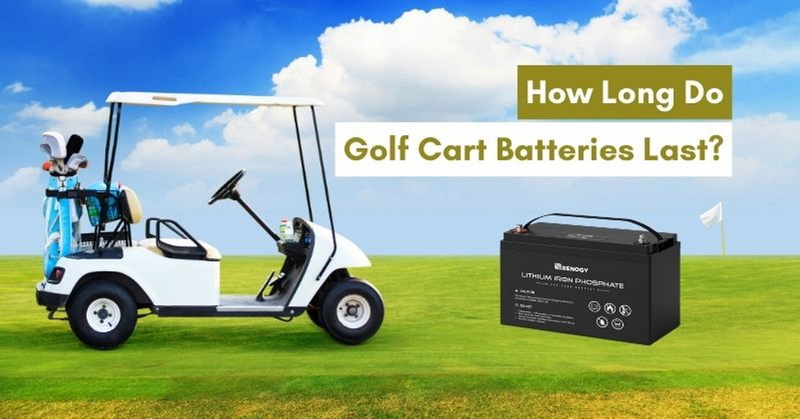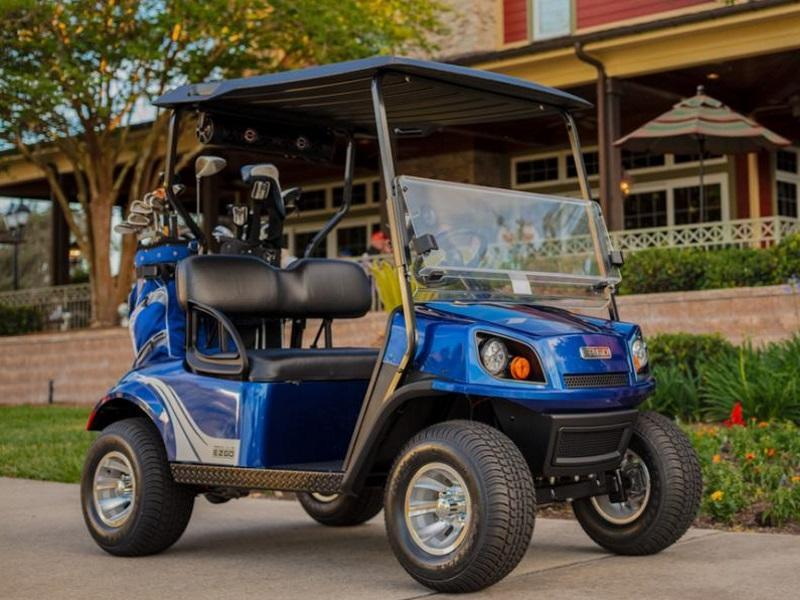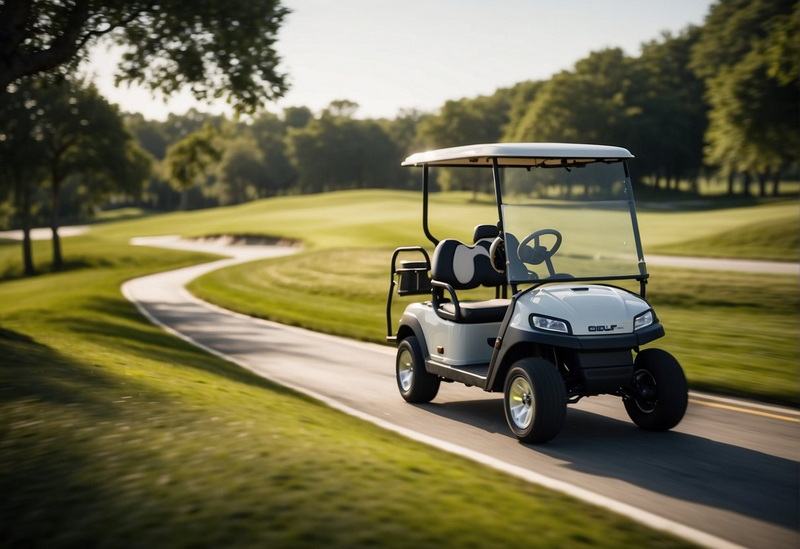Content Menu
● Types of Golf Cart Batteries
>> Lead-Acid Batteries
>> Lithium-Ion Batteries
● Average Lifespan of Golf Cart Batteries
>> Lead-Acid Batteries
>> Lithium-Ion Batteries
● Factors Affecting Battery Lifespan
● Maximizing Golf Cart Battery Lifespan
>> Proper Charging
>> Regular Maintenance
>> Proper Storage
>> Avoid Deep Discharges
>> Temperature Management
● Signs It's Time to Replace Your Golf Cart Batteries
● Cost Considerations: Lead-Acid vs. Lithium-Ion
>> Lead-Acid Batteries
>> Lithium-Ion Batteries
● Environmental Impact
● Future of Golf Cart Batteries
● Conclusion
● Frequently Asked Questions
>> 1. How often should I charge my golf cart batteries?
>> 2. Can I use car batteries in my golf cart?
>> 3. How can I tell if my golf cart batteries are dying?
>> 4. Are lithium-ion batteries worth the extra cost for golf carts?
>> 5. How do I properly store my golf cart during the off-season?
Electric golf carts have become increasingly popular among golf enthusiasts and resort communities alike. One of the most crucial components of these eco-friendly vehicles is their battery system. Understanding the lifespan of golf cart batteries is essential for proper maintenance and cost-effective ownership. In this comprehensive guide, we'll explore the factors that influence battery longevity, different types of golf cart batteries, and tips to maximize their lifespan.

Types of Golf Cart Batteries
Before delving into battery lifespan, it's important to understand the different types of batteries used in electric golf carts.
Lead-Acid Batteries
Lead-acid batteries are the most common type used in golf carts. They come in two varieties:
1. Flooded Lead-Acid (FLA) Batteries
2. Sealed Lead-Acid (SLA) Batteries, including Absorbent Glass Mat (AGM) and Gel batteries
Lithium-Ion Batteries
Lithium-ion batteries are becoming increasingly popular due to their longer lifespan and improved performance.
Average Lifespan of Golf Cart Batteries
The lifespan of golf cart batteries varies depending on the type of battery and several other factors.
Lead-Acid Batteries
On average, lead-acid golf cart batteries last between 4 to 6 years with proper maintenance. However, this can vary:
- Flooded Lead-Acid: 3 to 5 years
- AGM and Gel: 4 to 7 years
Lithium-Ion Batteries
Lithium-ion batteries typically last much longer:
- Average lifespan: 8 to 10 years
- Some high-quality lithium batteries can last up to 20 years
Factors Affecting Battery Lifespan
Several factors can influence how long your golf cart batteries will last:
1. Usage Frequency: More frequent use can lead to faster battery degradation.
2. Depth of Discharge: Regularly discharging batteries to very low levels can shorten their lifespan.
3. Charging Habits: Proper charging practices are crucial for battery longevity.
4. Temperature: Extreme temperatures, especially heat, can negatively impact battery life.
5. Maintenance: Regular maintenance, including water level checks for flooded lead-acid batteries, is essential.
Maximizing Golf Cart Battery Lifespan
To get the most out of your golf cart batteries, follow these best practices:
Proper Charging
- Charge batteries after each use, even if only partially discharged.
- Use a high-quality charger designed for your specific battery type.
- Avoid overcharging by using an automatic charger with a shut-off feature.
Regular Maintenance
- For flooded lead-acid batteries, check and maintain proper water levels.
- Keep batteries clean and free from corrosion.
- Tighten battery connections regularly.
Proper Storage
- Store golf carts in a cool, dry place when not in use.
- For long-term storage, use a trickle charger to maintain battery charge.
Avoid Deep Discharges
- Try not to discharge lead-acid batteries below 50% capacity.
- For lithium-ion batteries, avoid complete discharges.
Temperature Management
- Protect batteries from extreme temperatures, especially heat.
- If possible, store golf carts in temperature-controlled environments.

Signs It's Time to Replace Your Golf Cart Batteries
Even with proper care, batteries will eventually need replacement. Look out for these signs:
1. Decreased range or power
2. Longer charging times
3. Visible damage or corrosion
4. Batteries older than 5-6 years (for lead-acid)
5. Frequent need for water top-ups (for flooded lead-acid)
Cost Considerations: Lead-Acid vs. Lithium-Ion
When considering battery replacement, it's important to weigh the costs:
Lead-Acid Batteries
- Initial Cost: Lower
- Lifespan: Shorter (4-6 years)
- Maintenance: Higher (regular water top-ups, cleaning)
Lithium-Ion Batteries
- Initial Cost: Higher (2-3 times more expensive)
- Lifespan: Longer (8-10 years or more)
- Maintenance: Lower (virtually maintenance-free)
While lithium-ion batteries have a higher upfront cost, their longer lifespan and lower maintenance requirements can make them more cost-effective in the long run.

Environmental Impact
Consider the environmental impact when choosing golf cart batteries:
- Lead-acid batteries are recyclable but contain harmful materials.
- Lithium-ion batteries have a lower environmental impact and are also recyclable.
Future of Golf Cart Batteries
The golf cart battery industry is constantly evolving. Some emerging trends include:
1. Improved lithium-ion technology
2. Smart battery management systems
3. Solar-powered charging options
4. Faster charging capabilities
Conclusion
The lifespan of golf cart batteries depends on various factors, including battery type, usage patterns, and maintenance practices. While lead-acid batteries typically last 4-6 years, lithium-ion batteries can last 8-10 years or more. By following proper maintenance procedures and charging habits, you can maximize the lifespan of your golf cart batteries and ensure optimal performance throughout their life.
Remember that investing in high-quality batteries and proper care can lead to significant long-term savings and a more enjoyable golfing experience. Whether you choose lead-acid or lithium-ion batteries, understanding their characteristics and maintenance requirements will help you make an informed decision and get the most out of your electric golf cart.

Frequently Asked Questions
1. How often should I charge my golf cart batteries?
It's best to charge your golf cart batteries after each use, even if they're not fully discharged. This practice helps maintain battery health and prevents sulfation in lead-acid batteries.
2. Can I use car batteries in my golf cart?
No, you should not use car batteries in a golf cart. Golf cart batteries are deep-cycle batteries designed to provide steady power over long periods, while car batteries are designed for short bursts of high power.
3. How can I tell if my golf cart batteries are dying?
Signs of dying golf cart batteries include decreased range, longer charging times, difficulty climbing hills, and visible corrosion on battery terminals. If your batteries are more than 5-6 years old and showing these signs, it's likely time for replacement.
4. Are lithium-ion batteries worth the extra cost for golf carts?
While lithium-ion batteries have a higher upfront cost, they often prove to be more cost-effective in the long run due to their longer lifespan, lower maintenance requirements, and improved performance. For frequent users or those planning to keep their golf cart for many years, lithium-ion batteries can be a worthwhile investment.
5. How do I properly store my golf cart during the off-season?
To properly store your golf cart during the off-season, fully charge the batteries, disconnect them (for lead-acid), store the cart in a cool, dry place, and use a trickle charger to maintain battery charge. For lithium-ion batteries, follow the manufacturer's specific storage instructions.











































